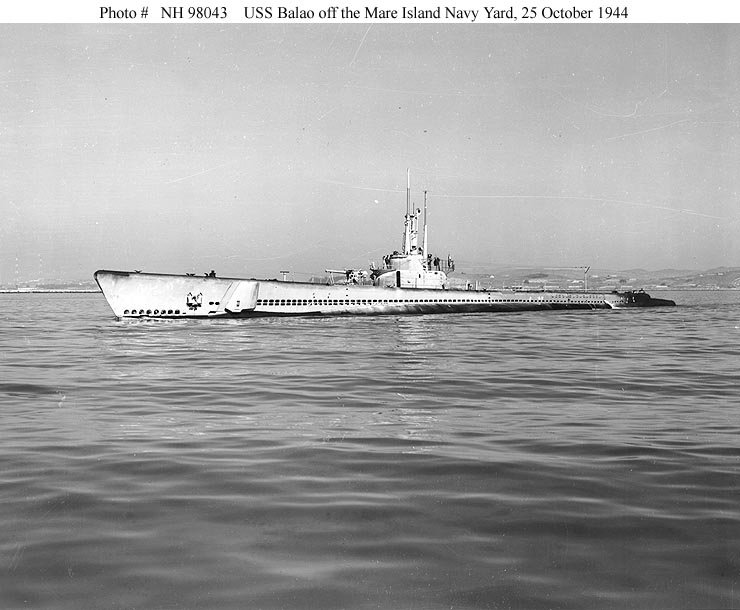|
US Navy Balao class, a fleet submarine
 Except for the heavier hull structure, the Balao class design, named for the lead submarine designated to be built with heavier hull plating, was almost identical in equipment, layout, and appearance to the Gato type and was first phased into the Portsmouth Navy Yard construction schedule without a break in the rate of production. Except for the heavier hull structure, the Balao class design, named for the lead submarine designated to be built with heavier hull plating, was almost identical in equipment, layout, and appearance to the Gato type and was first phased into the Portsmouth Navy Yard construction schedule without a break in the rate of production.
Among submariners, the new boats soon became known as `thick skins` and the older ones as `thin skins`, and there was considerable argument over the behavior to beexpected of the new steel under depth-charging. Some felt that the heavierhulls might rupture where the thinner and more flexible plates would only dimple, and were perfectly content to stay with the older boats even though they obviously could not dive as deep. Their fears proved to be unwarranted.The Bureau`s conservative approach to increasing the operating depth for the heavy-hull boats turned out to be wise, for an unanticipated reason. Because of the huge wartime demands for steel and the difficulty of obtaining certain critical alloy elements, the mills were having problems meeting all requirements. Therefore, without the prior knowledge of the submarine designers, the government specifications for HTS were relaxed from chrome-vanadium steel with yield strength of 50,000 pounds per square inch, to a titanium manganese alloy with 45,000 pounds per square inch yield strength.
Although this was considerably stronger than the mild steel previously used in submarines, it was less than the submarine hull designers had planned on. But the extra margin of safety designed into the boats was sufficient to absorb the difference. Since it was obviously impossible to test every square foot of plating going into a submarine, the design margin was also intended to assure the strength and integrity of the hull, in case some substandard steel got by the inspection process.
Specifications, Balao class:
The first of the Balao Class submarines, USS Balao (SS-285), was laid on June26, 1942 by the Portsmouth Navy Yard at Kittery, Maine, launched October 27, 1942, commissioned February 4, 1943.
Displacement (srf/sub tons): 1,526/2,391
Dimensions (L*B*D feet): 311`8*27`3*15`3
Propulsion: diesel-electric,4*Fairbanks Morse diesel engines, 5,400hp, 4*Elliot Motor Co. electric main motors with 2,740hp, reduction gear ,two 126-cell main storage batteries, two propellers
Speed (srf/sub knots): 20.25/8.75
Range (srf/sub n/miles@knots): 11,000@10/100@2
Diving depth (feet): 400
Complement: 6 officers 60 enlisted
Torpedo: 6*21" bow torpedo tubes, 4*21" stern torpedo tubes, total of 24 torpedoes
Mines: none
Armament: 1*5"/25 main deck gun, 1*40 mm AA gun, 1*20 mm AA gun, 2*0.5 machine gun
Construction
Orders were placed for 256 units of the Balao Class, but only 119 were completed to the original design, the rest being either cancelled or reordered later in the war. Most of the Balao Class submarines underwent conversion, Guppy project, to new configurations after World War II and made up the bulk of the Navy`s active submarine force until nuclear-powered attack boats replaced most of them during the 1960s.
Back to History Index
|